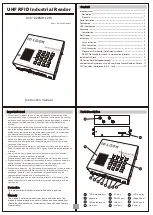
86
• Feldbus Coupler/Controller
Fieldbus Controller 750-806
WAGO-I/O-SYSTEM 750
DeviceNet
3.2.7.5 Change MAC ID by SW
The MAC ID of the Controller can be changed via the network using the soft-
ware (e.g. WAGO NETCON, RS NetWorx). For this purpose, the node ad-
dress is stored in non-volatile memory. Should the address set at the DIP
switch differ from the one set via the network using the software, the I/O LED
changes its colour to orange.
To reset the software default address, the invalid address 64 is entered in class
3, instance 1, attribute 1.
Subsequently, the Controller has its MAC ID that is set at the DIP switch.
3.2.7.6 Heartbeat
The heartbeat function permits a node to cyclically transmit a so-called heart-
beat message and, in this manner, to signal its communication ability to all
members in the network.
If a responsible heartbeat consumer does not receive a message within a pre-
defined time (Heartbeat Consuming Time), this is registered as a heartbeat
fault. The relationship between producer and consumer of a Heartbeat-
message can be configured by entries in the object directory, so the time bet-
ween two Heartbeat messages can be entered in Class 0x01, Instance 1, Attri-
but ID 10 (0x0A).
3.2.7.7 Bit-Strobe
The bit strobe I/O connection is always a 1 to n multicast connection.
In other words, a master can reach with its message all slaves supporting the
bit strobe command. The transfer takes place at the same time. In this manner
it is possible to synchronize the slaves.
The length of this master message is limited to 8 bytes. Each node address in
the net is assigned a bit within the 8 data bytes. The reaction of the slave
which bit is set is specific to the application. The reaction has to be defined
and it has to be known by the PLC. With its answer, each slave can return 8
bytes of data. The order of the answers depends on the reaction time of the
single slave and, in addition, it depends on the particular node address. If all
slaves would reply to the Bit-Strobe command at the same time, the order of
sending on the CAN bus would be determined by the node address (bit arbi-
tration).
Further information
You can find more details in chapter 5.6.2.2.1 "Bit-Strobe".















































